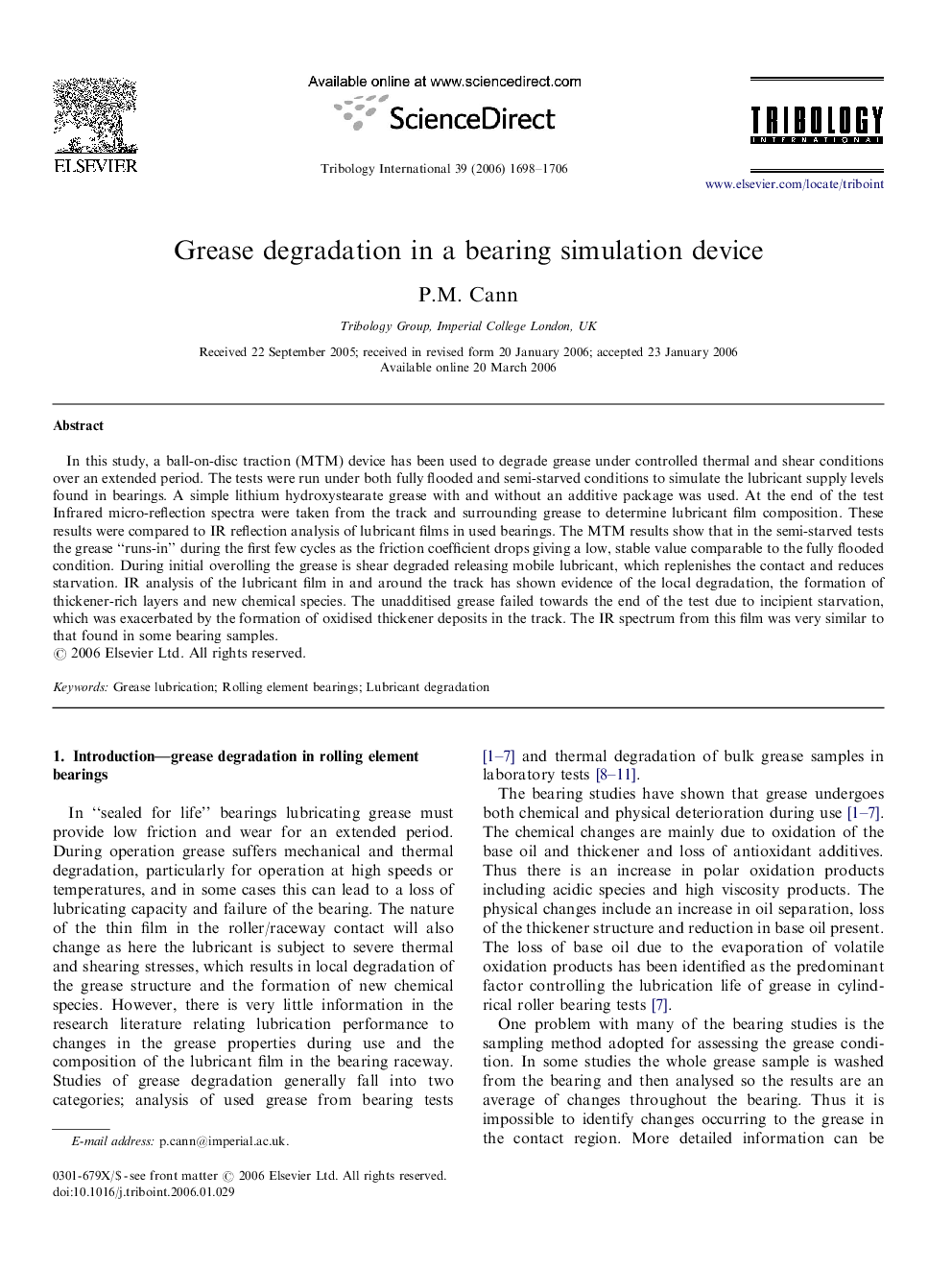| Article ID | Journal | Published Year | Pages | File Type |
|---|---|---|---|---|
| 616660 | Tribology International | 2006 | 9 Pages |
In this study, a ball-on-disc traction (MTM) device has been used to degrade grease under controlled thermal and shear conditions over an extended period. The tests were run under both fully flooded and semi-starved conditions to simulate the lubricant supply levels found in bearings. A simple lithium hydroxystearate grease with and without an additive package was used. At the end of the test Infrared micro-reflection spectra were taken from the track and surrounding grease to determine lubricant film composition. These results were compared to IR reflection analysis of lubricant films in used bearings. The MTM results show that in the semi-starved tests the grease “runs-in” during the first few cycles as the friction coefficient drops giving a low, stable value comparable to the fully flooded condition. During initial overolling the grease is shear degraded releasing mobile lubricant, which replenishes the contact and reduces starvation. IR analysis of the lubricant film in and around the track has shown evidence of the local degradation, the formation of thickener-rich layers and new chemical species. The unadditised grease failed towards the end of the test due to incipient starvation, which was exacerbated by the formation of oxidised thickener deposits in the track. The IR spectrum from this film was very similar to that found in some bearing samples.
